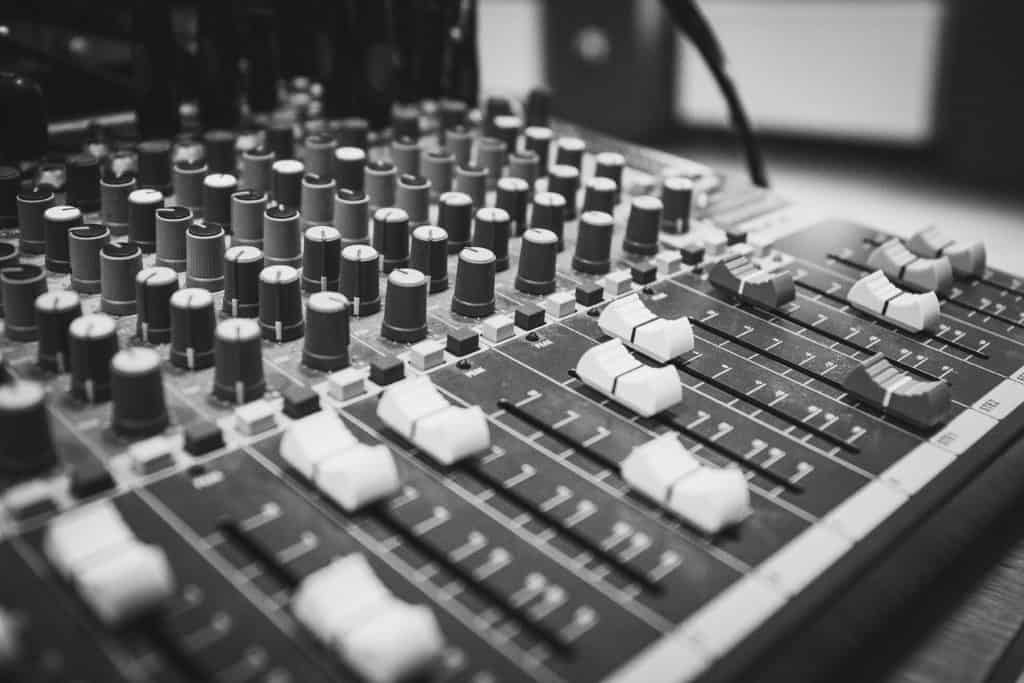YouTube is one of the most popular social media platforms in the world. 2 billion monthly users watch over a billion hours of content per day. The popularity of the platform makes it a great place for emerging content creators and filmmakers, but YouTube’s music copyright policies are constantly evolving and can be confusing. Knowing what kind of audio files you can legally use is essential for avoiding serious consequences like copyright strikes or even a permanent ban. Copyright-free and royalty-free music services provide an affordable, easy-to-obtain solution.
Read our guide to find out the essential YouTube music copyright policies every content creator and filmmaker needs to know and how to use music on YouTube without breaking any of the platform’s rules.

Music Licensing Explained
Musicians earn copyright or ownership of the content they create. They gain the exclusive right to earn payments from it known as royalties.
They also have the right to give someone else license rights to the music. The content creator pays the artist a fee to use the music.
Royalty-free music can be used in visual media like YouTube videos or films without having to pay synchronization royalties. The licensing fees are much cheaper than alternative methods but come with restrictions. You can’t significantly change royalty-free music or use it to promote a product or service.
Copyright-free music no longer falls under copyright. It lives in the public domain, allowing anyone to use the content. There is one major disadvantage of copyright-free music. It can often take decades or centuries for the copyright to expire. Today’s top hits may not enter the public domain in your lifetime for use in your content.
For more information, find out what royalty-free music is and how it’s different from copyright-free music.
How YouTube Finds Copyright Infringement
YouTube’s Content ID tool is an automated system for spotting copyrighted music in videos. It includes over 9000 partners who have put copyright claims on over 800 million videos so far. It uses a growing database of over 75,000 audio files to check for copyright infringement.
If Content ID finds a match, the copyright holder, i.e. the original artist and/or their record company, can decide what to do about it. They can block, track, or monetize the identified content. Content ID often automatically applies the block option.
If the copyright owner sends a formal complaint to YouTube, the video uploader may face even more serious repercussions. The Digital Millennium Copyright Act of 1998 required YouTube to enact a notice-and-takedown system and cancel accounts if a content creator has multiple offenses.
Consequences of Breaking YouTube’s Music Copyright Policies
If a copyright owner finds their music in your video, they can file a formal DMCA takedown notice. This leads to consequences for the video uploader, even for a small clip of a copyrighted song.
YouTube videos that get a copyright notice can get blocked, muted, or removed from the platform. Because of this, if the video was previously monetized, the content creator won’t be able to receive money from it anymore.
A mandatory session in YouTube’s copyright school can remove a copyright strike if completed within six months. Getting multiple strikes in a row within a short period is usually how a user gets permanently banned.
There are two main types of strikes you can get on your YouTube account, including Community Guideline and Copyright strikes. If you get three, especially if they’re all of the Copyright variety, you’ll lose your account, all its videos, and receive a permanent ban from creating a channel or uploading content.
How to Use Music on YouTube Legally
You must know how to use music on YouTube legally and effectively.
Misconceptions exist about what are YouTube music copyright policies and what aren’t. For example, many people believe they can use short clips of any song they like, but this isn’t true. They may assume they can assign any content they want as fair use, but this is a matter best left to a copyright attorney.
There are several ways to avoid a copyright strike. First, use copyright-free or royalty-free songs to ensure you have permission to add them to your content.
YouTube also has built-in options to help content creators and filmmakers find music and sound effects to use in their videos. Look for the song you want to use in YouTube’s music policy directory to see what consequences you could face for using it. You can also check the Audio Library for copyright-free options that YouTube won’t block or issue a strike for.
You must also be aware of potential exceptions to YouTube’s music copyright policies. Criticisms, reviews, parodies, and commentary may fall under fair use. This is a clause in copyright law and, if your video meets it, your account won’t get a strike.

Why You Should Be Using Royalty-Free Music on YouTube
Royalty-free music is one of the best options for your videos. It’s affordable, and YouTube won’t give you a copyright strike once it realizes you have permission to use the music.
Using royalty-free music has several benefits for content creators and filmmakers. It allows them to use the same content multiple times for a single fee while avoiding copyright strikes. Royalty-free music also benefits musicians. It gives them exposure and extra money.
Read our guide to music licensing for filmmakers and content creators to find out how you can use music in your projects.
Where to Get Royalty-Free Music on YouTube
YouTube’s music copyright policies cover almost any unauthorized usage of a song or audio file the content creator or filmmaker didn’t create themselves. Repeated abuse of the rules can lead to serious consequences.
Copyright lasts for years, so most modern music won’t be copyright-free. Royalty-free music is a better option, as it requires a small one-time fee for lifetime usage.There are several services offering copyright-free and royalty-free music for use on YouTube. They’re not all created equally, as prices and audio quality differ.
We’re one of the best places to find music that won’t violate any YouTube music copyright rules. Browse our music library and selection of original songs today.